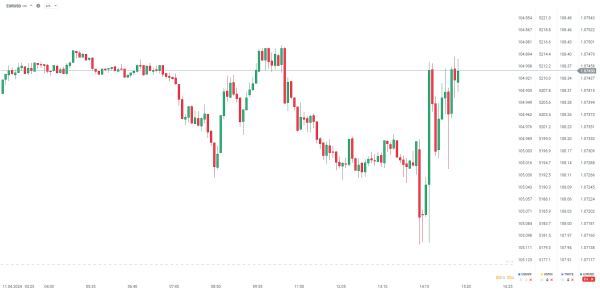ECB chair Lagarde press conference. EURUSD rebounds to 1.075
Industrial production, especially in energy-intensive industries, remains low, but is expected to recover in the coming quarters.
Tension in the labor market is gradually easing. According to the latest indicators, the rate of wage growth will decline further.
There has been a decline in food and energy and goods price inflation. Services price inflation remained high at 4% in March.
Inflation is expected to fall to target next year.
- Inflation eased mostly in foods and goods prices but in services inflation is still too high
- Risks to economic growth continue to tilt to the downward side.
- Economic growth could be higher if inflation falls more than expected with higher wages
- Inflation could be also higher if wages rose or companies profit margins remained high.
- If we had more certainty about the outlook, an interest rate cut would be warranted.
- We are not committing in advance to a specific interest rate path.
- We will receive more important data in April, and much more data and information and new forecasts in June to inform our decisions
- We will analyze the data and see if it confirms our hopes that inflation is moving in the right direction.
- Several members were confident enough to cut interest rates.
- We depend on the data, not the Federal Reserve.
- The size of our balance sheet has already shrunk significantly
Lagarde does not sound hawkish and will prepare the market for possible interest rate cuts in June. Nevertheless, if the trend in the data changes, keeping interest rates unchanged cannot be ruled out. Due to geopolitics; freight rates and oil prices further disinflation process may be disrupted.

EURUSD remains below the level of 1.0750 but it's most likely due to the slight weakness of the dollar after the publication of slightly lower PPI inflation. Source: xStation5